What’s the ROI of Automated Pallet Changing Machines in Europe's multi-standard Sector?
Running a modern manufacturing or logistics operation in Europe presents a unique set of challenges. You're constantly under pressure to increase efficiency and cut costs, but you're dealing with a complex web of varying standards. One of the biggest unseen headaches is pallet management. Your facility might need to handle EUR-pallets for one shipment, CHEP pallets for another, and custom pallets for a specific client. This often leads to manual, time-consuming changeovers, creating bottlenecks that ripple through your entire production line. This manual process is not just slow; it’s a drain on your resources, a risk to your employees’ safety, and a constant source of potential product damage. You know there has to be a better way, but justifying a significant capital investment in automation requires a clear, undeniable return.
The return on investment (ROI) for an automated pallet changing machine in Europe's multi-standard sector is typically realized within 18 to 36 months. This calculation is based on direct labor savings from reassigning multiple workers per shift, a dramatic reduction in product and pallet damage, and a significant increase in operational throughput. By automating this critical step, facilities can directly address the high labor costs and strict handling regulations prevalent in the European market, turning a major operational bottleneck into a competitive advantage.
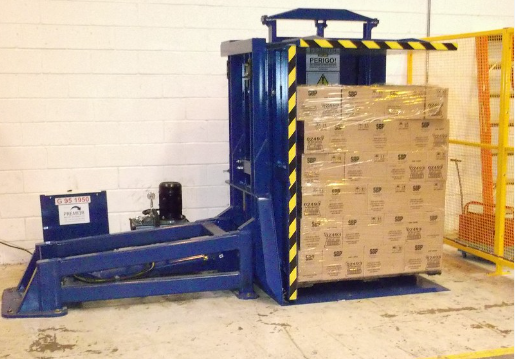
But ROI is more than just a payback period on a spreadsheet. It represents a fundamental shift in how your operation runs. It's about building a more resilient, efficient, and safer workplace. To truly understand the value, we need to break down exactly where these returns come from. It's not just about the machine; it's about the entire ecosystem of benefits that it unlocks. Let's dive deeper into the specific ways automation pays for itself and explore the tangible impact it can have on your business.
How do automated pallet changers directly reduce operational costs in a high-wage environment like Europe?
In any high-wage economy like those across Europe, labor is one of the most significant operational expenses. I've seen countless factories where the budget for manual handling is a constant point of contention. You rely on skilled, hardworking people, but the task of manually transferring heavy loads from one pallet to another is inefficient and expensive. It's a slow, physically demanding job that introduces risk and variability into a process that should be smooth and predictable. This directly impacts your bottom line every single day, not just in wages but in the hidden costs of inefficiency and potential workplace injuries.
Automated pallet changers tackle this problem head-on by drastically reducing, and in many cases eliminating, the need for manual handling in this specific task. A single machine can perform the work of two to three employees per shift, leading to direct labor cost reductions of over 70% for that process. Beyond wages, automation also cuts down on secondary costs associated with product damage from forklift mishaps and the high insurance premiums tied to physically strenuous jobs.
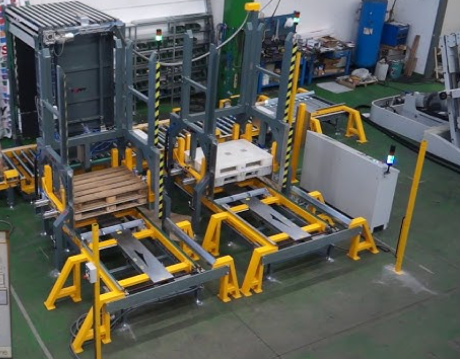
A Breakdown of Cost Reductions
From my years on the factory floor, both as an engineer and now as a business owner, I've learned that the most obvious cost is rarely the only one. When we talk about reducing operational expenses with an automated pallet changer, the savings come from several key areas.
First, let's look at direct labor. A manual pallet transfer process often requires at least two workers to de-stack, move, and re-stack goods. In many European countries, the fully-loaded cost of an employee (including salary, social security, and other benefits) can be substantial. An automated system runs 24/7 with minimal supervision.
Here’s a simplified comparison:
| Cost Factor | Manual Pallet Changing (2 Workers) | Automated Pallet Changer |
|---|---|---|
| Labor Cost per Hour | €50 (€25/hr x 2) | ~€2 (Electricity) |
| Hours per Day (2 shifts) | 16 hours | 16 hours |
| Daily Labor Cost | €800 | ~€32 |
| Annual Labor Cost (250 days) | €200,000 | ~€8,000 |
| Net Annual Savings | - | €192,000 |
These numbers are illustrative, but they show a clear and compelling financial picture. I worked with a client in the food and beverage industry whose team was manually switching pallets for export orders. After installing an automated system, they were able to reassign four full-time employees to higher-value roles in quality control and logistics coordination, completely transforming their cost structure within the first year.
Beyond Wages: The Hidden Financial Drains
The savings don't stop at salaries. Manual handling is a primary cause of workplace injuries, particularly musculoskeletal disorders (MSDs). These injuries lead to lost workdays, increased insurance premiums, and potential legal liabilities. By automating the heavy lifting, you create a safer work environment, which has a direct and positive impact on your insurance costs and overall operational stability.
Furthermore, let's consider product damage. A forklift tine can easily pierce a box, or a manually stacked pallet can become unstable. I estimate that many companies lose between 0.5% to 2% of their goods in the warehouse due to handling errors. An automated pallet changer uses precise clamping and pushing mechanisms, handling loads gently and securely every time. For a company shipping millions of euros worth of product, saving even 1% from damage translates into tens of thousands of euros straight back to the profit margin.
What is the impact of automation on compliance with Europe's strict safety and handling standards?
Navigating the landscape of European safety regulations, like the Machinery Directive 2006/42/EC, is a major responsibility for any plant owner. You worry about your team’s well-being, but also about the severe consequences of non-compliance, which can include heavy fines, operational shutdowns, and damage to your company's reputation. Relying on manual procedures to ensure safety for repetitive, physically demanding tasks is like walking a tightrope. Even with the best training, human error is always a possibility, and the risk of a serious injury is a constant concern.
Automation fundamentally changes this dynamic by engineering safety directly into the process. An automated pallet changer is designed from the ground up to comply with the highest safety standards. It removes employees from the most hazardous part of the job—the lifting and moving of unstable, heavy loads. This systematic removal of risk is the single most effective way to improve your safety record and ensure you are always in compliance with Europe’s stringent workplace regulations.
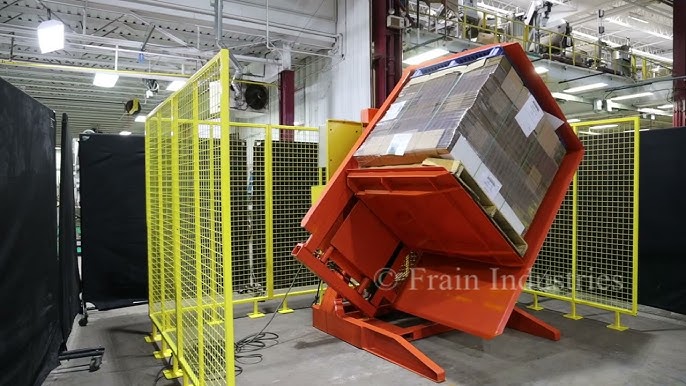
Building a Foundation of Engineered Safety
When I started designing packing machinery, my first priority was always to create systems that protect people. This philosophy is at the core of modern automation. An automated pallet changer isn't just a machine; it's a complete safety system.
First, it directly addresses the requirements of the EU Machinery Directive. These machines are built with integrated safety features that are non-negotiable. This includes:
- Safety Fencing: A physical barrier that prevents personnel from accidentally entering the operational area while the machine is in motion.
- Light Curtains: These create an invisible infrared barrier. If a person or object breaks the beam, the machine immediately stops, preventing potential crushing or trapping injuries.
- Emergency Stops: Clearly marked and easily accessible E-stops are placed at key points, allowing anyone to halt the machine instantly in an emergency.
- Interlocked Doors: Access doors to the machine's core are fitted with switches that cut power to the system if a door is opened during operation.
Eliminating the Root Cause of Workplace Injuries
The leading cause of injury in logistics and manufacturing is overexertion from lifting, pushing, and pulling heavy objects. This leads to chronic back pain, shoulder injuries, and other musculoskeletal disorders (MSDs), which are a huge focus for European health and safety executives. A pallet loaded with goods can weigh over 1,000 kg. Expecting a human to manipulate that safely, hundreds of times a week, is unrealistic.
Automation eliminates this entire category of risk. The machine does all the heavy work. This not only prevents accidents but also creates a better working environment. I remember visiting a steel coil processing plant where the team morale was low due to the physically draining nature of their work. After we installed an automated handling system, the change was remarkable. The workers were no longer exhausted and could focus on more skilled tasks. This didn't just improve safety; it improved their job satisfaction and reduced employee turnover. Compliance became a byproduct of creating a better, more ergonomic process.
How can these machines improve throughput and adapt to the diverse pallet standards found across Europe?
Your production line might be a model of efficiency, capable of producing goods at a rapid pace. But if everything grinds to a halt at the final packaging stage, that efficiency is lost. This is a common problem I see in facilities that serve diverse markets across Europe. One customer requires their goods on a 1200x800mm EUR-pallet, while another needs a 1200x1000mm industrial pallet. Manually switching between these standards creates a massive bottleneck. You have to stop the line, find the right pallets, and painstakingly transfer the load. This downtime kills your throughput and makes it incredibly difficult to respond flexibly to changing customer orders.
Modern automated pallet changers are specifically designed to solve this problem of variability. They are not fixed, single-purpose machines. Through advanced sensors and programmable logic, they can identify and smoothly adapt to different pallet dimensions on the fly. This capability can increase the throughput of your palletizing area by as much as 300% compared to manual methods. It transforms a chaotic and slow changeover process into a seamless, automated workflow, allowing you to meet any customer requirement without sacrificing speed.
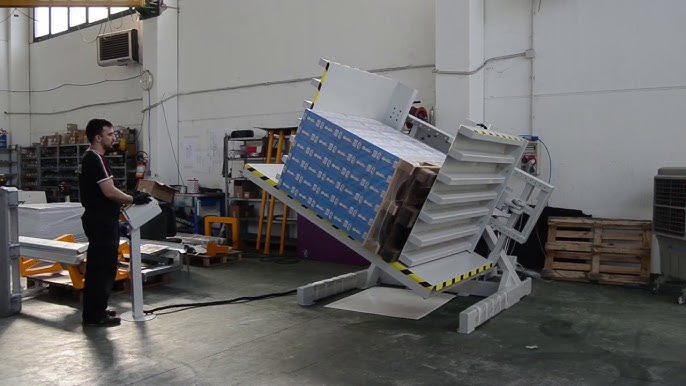
The Mechanics of Flexibility and Speed
The magic behind adapting to multiple standards lies in the machine's design. It's not about having different machines for different pallets; it's about having one intelligent machine.
First, let's talk about the mechanics. A high-quality pallet changer uses a combination of sensors and adjustable components. When a pallet load enters the machine, sensors can measure its dimensions. The system then automatically adjusts its side-clamping walls and pusher plate to securely hold that specific load. Whether it's a standard Euro-pallet, a larger CHEP pallet, or even a non-standard custom size, the machine adapts.
Here is a look at how it handles common European pallet types:
| Pallet Type | Dimensions (mm) | Key Challenge | Automated Solution |
|---|---|---|---|
| EUR/EPAL 1 | 1200 x 800 | Most common, but requires precise handling | System defaults or is easily programmed for this size. |
| EUR 2 / ISO 2 | 1200 x 1000 | Wider base, needs wider clamp setting. | Sensors detect the 1000mm width and adjust clamps automatically. |
| EUR 3 | 1000 x 1200 | Same as EUR 2 but different orientation. | The system can handle loads regardless of entry orientation. |
| CHEP Pallet | 1200 x 1000 | Often used in pooling systems, similar to EUR 2. | Easily accommodated by the same settings as other 1200x1000 pallets. |
This adaptability is crucial. A client of mine in the chemical industry had to switch between pallet types multiple times a day. Manually, each changeover took their team nearly 15 minutes. With an automated changer, the machine recognizes the load and completes the entire process in under 60 seconds. This time saving, multiplied over dozens of cycles per day, allowed them to eliminate the end-of-line bottleneck and increase their overall plant output by 15%. This is a direct contribution to the goal of maximizing capacity utilization.
Integrating for Total Efficiency
The true power of this technology is realized when it's integrated with your wider factory systems, like an MES (Manufacturing Execution System) or WMS (Warehouse Management System). This is a key step in any digital transformation journey.
When an order is processed in your MES, the system knows what kind of pallet is required for that specific customer. It can send a signal directly to the automated pallet changer. The machine then calls for the correct empty pallet type from a dispenser and executes the transfer without any human input. This eliminates the risk of human error—no more sending a shipment on the wrong pallet, which can lead to rejection by the customer and costly return logistics. It's a perfect example of how automation drives not just speed, but also accuracy and quality.
Beyond initial cost, what are the long-term maintenance and integration considerations for these systems?
Making the decision to invest in a major piece of equipment is significant. I understand that. The price on the proposal is one thing, but as a factory owner, you have to think about the total cost of ownership. The real fear isn't just the upfront cost; it's the unknown. Will this machine be a reliable workhorse or a constant source of maintenance headaches? How smoothly will it integrate with the equipment I already have? A machine that causes frequent downtime or requires specialized, expensive servicing can quickly turn a promising investment into a financial burden.
A successful long-term investment in automation depends on two things: choosing a machine that is robustly engineered for durability and partnering with a supplier who understands the complexities of integration. The key considerations must be the machine's design quality, the plan for preventative maintenance, and a clear strategy for making it communicate seamlessly with your existing production line. This is where you separate a mere equipment seller from a true strategic partner.
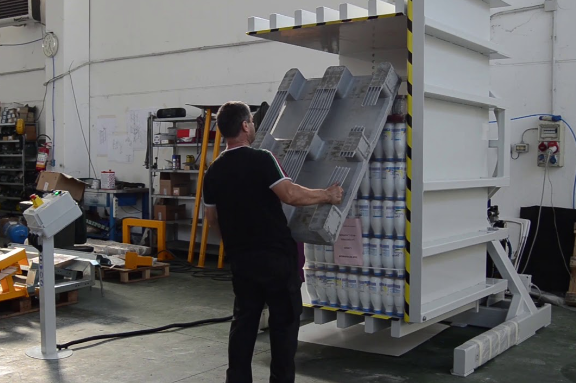
Engineering for Reliability and Uptime
When I established my own factory, I carried with me a core lesson from my engineering days: quality is built from the ground up. The long-term reliability of any machine is determined by the quality of its components and the intelligence of its design.
You should always inquire about the core components. For instance, we insist on using proven, high-quality parts like Siemens motors and control systems or Schneider electrics. These are components known for their reliability and are readily available, which simplifies maintenance down the road. The machine's frame should be constructed from heavy-gauge steel, designed to withstand the rigors of a 24/7 industrial environment without flexing or fatigue.
Furthermore, a modular design is critical. This means that key components, like the clamping mechanism or the pusher assembly, are designed as self-contained units. If a part does fail, you can replace the module quickly without having to perform complex, on-site repairs. This drastically reduces downtime from hours or days to mere minutes. It’s a design philosophy that focuses on keeping your line running.
The Power of Predictive Maintenance and IoT
This is where modern automation truly shines and directly supports the goal of achieving 95% or higher equipment uptime. Instead of waiting for something to break, we can now use technology to predict failures before they happen. This is a huge leap forward from traditional reactive or even preventative maintenance.
We can embed IoT (Internet of Things) sensors throughout the pallet changer. These sensors monitor key operational parameters in real-time:
- Vibration sensors on motors can detect bearing wear long before it leads to failure.
- Temperature sensors can alert you if a component is overheating.
- Cycle counters track the machine's usage, ensuring that parts are replaced based on actual wear and tear, not just a generic calendar schedule.
This data is fed into a simple dashboard. The system can then send an alert to your maintenance team, saying something like, "Motor 3 shows increased vibration. Recommend inspection within the next 48 hours." This allows you to schedule maintenance during planned downtime, avoiding a costly and unexpected production stop. It is a critical tool for any manager trying to maximize production stability.
This data-driven approach transforms maintenance from a cost center into a strategic tool for ensuring reliability and hitting your production targets. It’s a key part of the value a true partner should bring to the table—not just selling you a machine, but providing the tools to keep it running optimally for years to come.
Conclusion
Automating your pallet changing process is more than a cost-saving measure. It's a strategic investment in a safer, more flexible, and highly efficient operational future for your European business.



